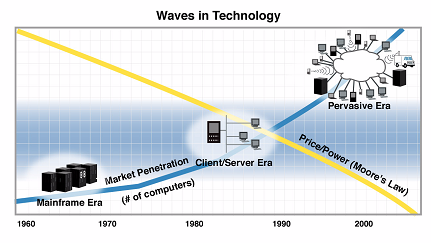What is Track and Trace?
These words are so linked, it is hard to differentiation between the two: Trace is to draw or outline; Track is to follow.
- Tracing is the ability to know the historical locations, the time spent at each location, record of ownership, packaging configuration, etc.
- Tracking involves knowing the physical location of a particular product/unit within the extended supply chain at all times
Often we hear about product traceability and process track ing. But there are more interesting facets to this issue.
ing. But there are more interesting facets to this issue.
The breadth and depth of the issue is really multi-dimension:
- Product: ingredients, from source to destination are often called provenance for cheese and wine lovers, pedigrees for pets and live stock, lineage, etc.
- Process: view of how and when the products are transformed
- People and Organizations: Who touched it and managed it; Chain of Custody. (CSI watchers are familiar with this term.)
- Financial views: valuation, pricings
- Events: what specific activities are occurring
- Information: the data associated with these products and processes
- Supply Chain and Logistics views, shipments, manifests, etc.
Customers, products, people, processes, and money—all are issues that are important.
In addition, we need to understand the other elements associated with these, such as performance metrics.
These issues above are more of the what. There are also issues associated with the actual architecting of the visibility and tracking. These are associated with levels of peering into that data. Are we looking at a shipment as a container’s worth of a company’s product? Or can we see the multiple layers within—each pallet, carton, product—nesting—and then link to the total data collection above, with data acquisition techniques like manual data entry, system-to-system data, RFID, GPS, voice, video, etc.
Time and touch are also part of the concept. Are these pre and post event signals and transactions, or the ability to see as it is happening—real-time—so that we can alter these events as they are unfolding?
Of course, all this takes some kind of technology. We have seen everything from live video transmission of events in motion in a security application, to fax, to EDI signals coursing from enterprise to data base to enterprise again, across the globe. Seeing is unique to the beholder, it seems.
What are the Processes?
A few examples of the types of tracking and tracing that we see most often today can be found in the chart at the end of this article[1]. There are many other types of examples such as law enforcement security, medical care, etc. But today these are seen most often and growing in importance.
How to Achieve it
We need not only technology, but also data management strategies to achieve results. Therefore, we will delve somewhat into these topics.
Enabling Technology Architecture
As business has gone global and now shares so much business activity across so many entities, we need to look at how technology supports the rich variety of visibility and track and trace. We need to distinguish between, within and outside the corporation. Corporate-centric approaches include ERP and mainframes (yes, still) as well as client server environments with distributed processes across the supply chain. But more and more pervasive technologies are gaining center stage. Peer-to-peer; device-to-device communications are the norm today. Today’s requirement for item or ingredient level track and trace will most likely mean that the devices of tomorrow will include RFID, sensors, and other nano-level technologies yet to be developed, and then additional devices for collecting and communicating this information.
mainframe era |
client/server era |
pervasive era |
|
|
|
|
|

Data Management Strategies
ChainLink did a research project on data sharing called the Single Version of the Truth. This report addresses what data is used and what kind of processes will share this data. It is noteworthy that this idea of data sharing has grown significantly in the last ten years. As firms learn to harmonize their processes, we will see increasing adoption of Master Data Management services and technologies, resurgence of data management methods in the enterprise as well as across the supply chain, and adoption of industry standards.
Conclusion
Although many have been on the journey to data integrity and integration journey for quite a few years, working from inside corporations, the battle front now is inter-enterprise. And it really is the beginning of many techniques such as platforms, on demand networks, MDM services/SOA, industry standards, etc., that can help you on your journey.
But the real question that we always get back to is: What is it that you want to achieve, and what is it really worth? Here are a few thoughts on quantifying the value.
Tainted brands can lead to the demise of your firm. If we look at the recent dog food scandal, it becomes evident that even brand companies did not know the source of many of their ingredients. And it was also exposed that people were paying for a premium brand that had the same ingredients as the discount brands. Double exposure! And there were over 60 cat food and 80+ dog food brands when all was said and done.
Supply Chains have huge dollars tied up in ineffective processes. So much more can be done here.
Anyone who is a devotee of lean knows that it is all about making the process VISIBLE, and communicating the metrics to everyone in the process. The concept is the ultimate message board, a google-like subscription, from an On-Demand type platform, shared by everyone across the process.
Many firms have embarked on the path forward, but most have no cohesive strategy for the ultimate corporate or supply chain monitoring of the critical events that drive value for their firm. This does seem like the place to start. There are many things we wish to see, but not all is achievable in just a year or two. But value driving process visibility seems, in today’s world, as critical as the firm’s accounting system, as a major focus for resources.
[1]
Track & Trace Processes |
Purpose |
Typical Vendor |
Typical Approaches |
Comments |
Trade Finance |
|
|
On Demand/ Multi-tenant (Highly secure) |
Banks have some elements, You will see new approaches linking business events with allocation of funds in many industries to support global trade activities. |
Compliance |
Track/evaluate and diagnose compliance issues for Retailers:
|
Compliance Networks Ramco Xign Various EDI Vans/hubs, like:
|
All inputs, forms, EDI, XML, document scans, manual data entry |
Retailers look for packaging, labeling and data transmissions.
Customs looks for adherence to paper work and processes.
Life Sciences compliance to FDA regulations, etc.
Data standards, physical restrictions, etc. |
ePedigree |
Tracking through the life of the product from Manufacturing to end of life |
|
|
Pharma and food, but also more organizations are interested in the source data.
|
Transportation |
Track shipment and document |
|
|
All modes |
Mfg Routings |
Track and direct goods thru Mfg process |
|
|
|
RFID |
Tracked, traced and tagged goods |
|
Active, Passive, Middleware can be on premise or over the web or satellite |
|
Food safety |
Trace food source and ingredients |
|
Bar-coding
|
|
Sustainability |
Track and trace from source (harvest) through the consumer and validate:
|
|
Shipment tracking:
|
|
Risk Management/ |
Track and Monitor of business events according to plan |
|
|
|
Financial |
Monitor, Trace, Validate financial payments, customers, etc. |
Financial Services networks (Cardmember Services, etc) |
|
|
Chain of Custody: Law Enforcement |
Evidence tracking |
Bar-coding and security companies |
|
Many customized solutions in Market |
Asset Tracking |
|
|
|
Everything from service supply chain, car rentals, equipment rentals, container tracking |
Document Tracking |
Log, Track and Locate critical documents |
Usually in-house built |
|
|
Locating |
Find specific product in yard or facility |
|
|
|
Product Integrity/ |
Monitor and Track for Quality |
|
|
|
Green Supply Chain |
Authentication of products produced, processed, used and recycled according to sustainable and Fair Trade practices |
Various brands and tracking solutions |
|
Certified wood, electronics compliant with Rohs and WEEI standards; produce such as coffee grown and traded with Fair Trade |
















